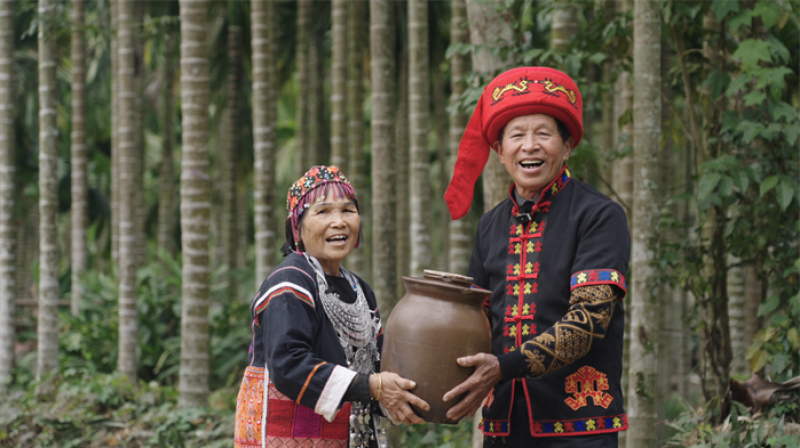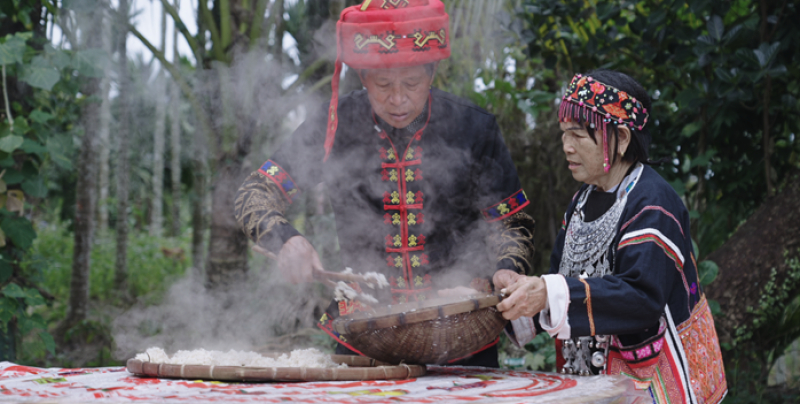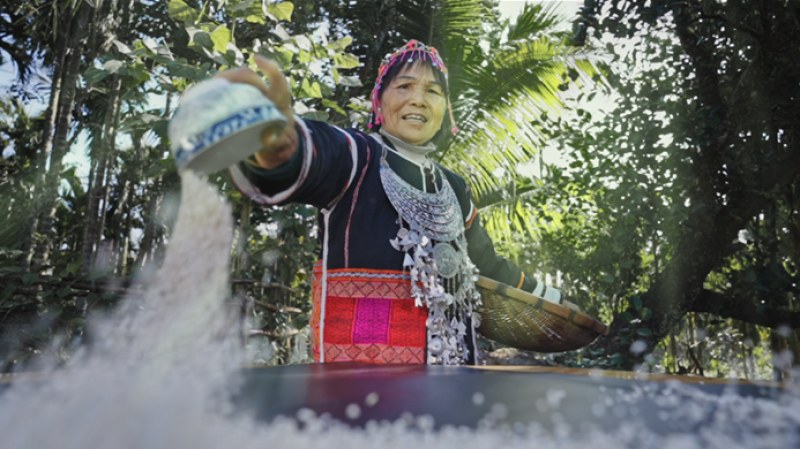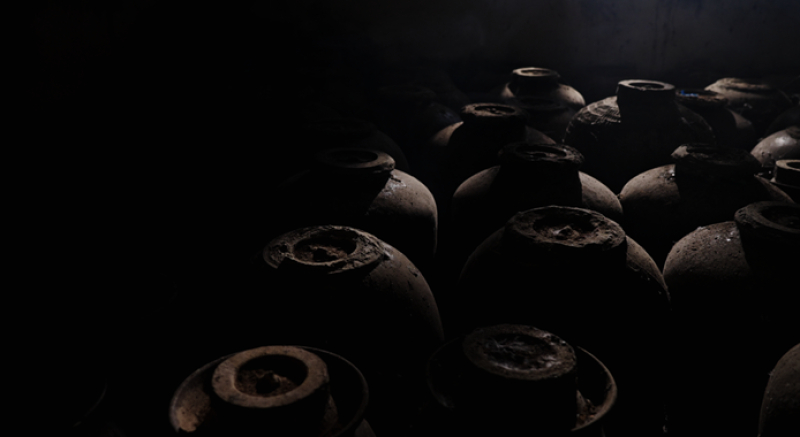/ 2025-01-24 16:46 / Culture
(On January 23) marks the "Xiaonian" (Little New Year, or Festival of the Kitchen God) in southern China, which always falls on the 24th day of the twelfth month of the Chinese lunar calendar. Just yesterday, husband and wife Pang Yexue and Wang Yuyong, got to work unearthing a jar that they buried in their back yard nearly 50 years ago. They filter the liquor contained within through layer upon layer of plantain leaves, where it slowly drips into a basin below. This jar of five-decade-old liquid, known as Li drip wine, takes a week of filtering before it is finally ready to enjoy.

In just a few days time, it will be eve of Spring Festival, when family members working away from home return for the new year. Li drip wine, a tipple filled with the joy and blessings of a happy reunion, is something that is always shared and enjoyed over dinner by the Li people at this time of year.
77-year-old Wang Yuyong hails from Chongmentou Village in Wuzhishan City's Shuiman Township. "My family has been brewing Li drip wine for more than a century, I'm the sixth generation. Brewing is hard work; none of my younger siblings wanted to learn. But I find it fascinating."
After they married, Mrs. Wang's husband, Pang Yexue, learned the craft from his wife. "We have been brewing drip wine annually since 1978. As soon as the Shanlan rice is harvested, we get to work. We've been at it for 47 years." More recently, the couple were recognized as county-level representative inheritors of the Li drip wine brewing techniques by Tunchang County.

In 2012, Tunchang "Li Drip Wine" was rated as "Hainan's most preferred alcohol brand by consumers," and, in 2014, its brewing techniques were listed as Tunchang county-level intangible cultural heritage.
Li drip wine is brewed according to a secret recipe originating in Wuzhishan, one of the homelands of the Li people. "The secret is in how the yeast cake is made. We use vines, leaves, roots, tubers, and other ingredients sourced from the slopes of Wuzhi Mountain," explained Mrs. Wang. Once the yeast cake is ready, it is gently broken up into a coarse powder. Once the Shanlan rice has finished steaming, this powder is then scattered on the rice.

Then comes the long wait as the rice ferments in water. "It takes about a week to ferment fully," said Mr. Pang. "I get the clay jar ready ahead of time so that I can pour the liquor straight in and seal the jar. Then, we bury the jar in the back yard."
The fertile soil becomes a warm "bed" for the Li drip wine. As it sleeps soundly beneath the ground, it matures into a warming tipple to be enjoyed by the Li people during Spring Festival decades later.

Copyright © 2020 Hainan Free Trade Port
Qiong ICP 19005356
All Rights Reserved
Office of the Hainan Free Trade PortWorking Committee
No. 69 Guoxing Avenue, MeilanDistrict, Haikou City
Hainan Province.570203, China
hnshgb xchch@sina.com
Copyright © 2020 Hainan Free Trade Port
Qiong ICP 19005356
All Rights Reserved